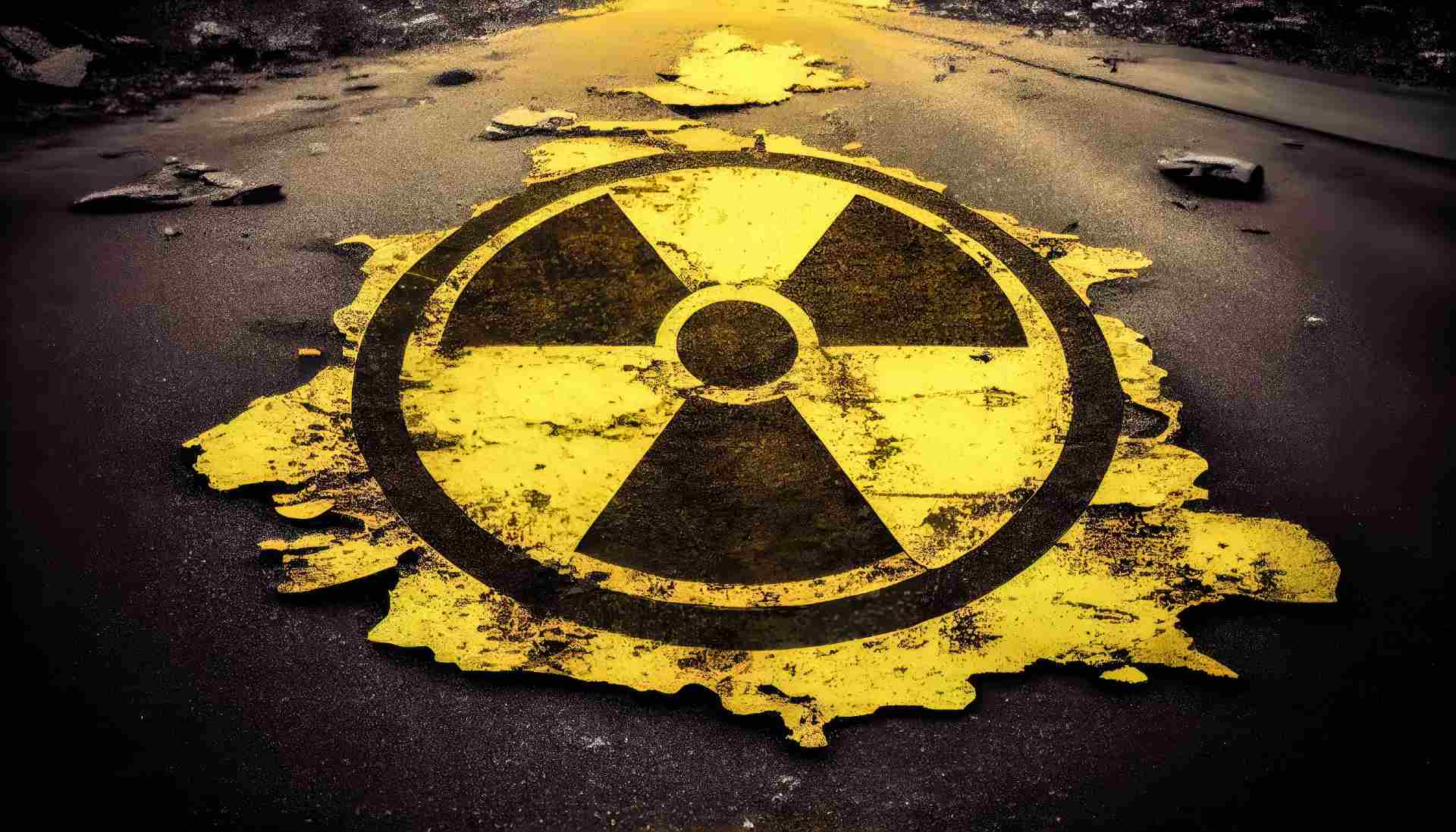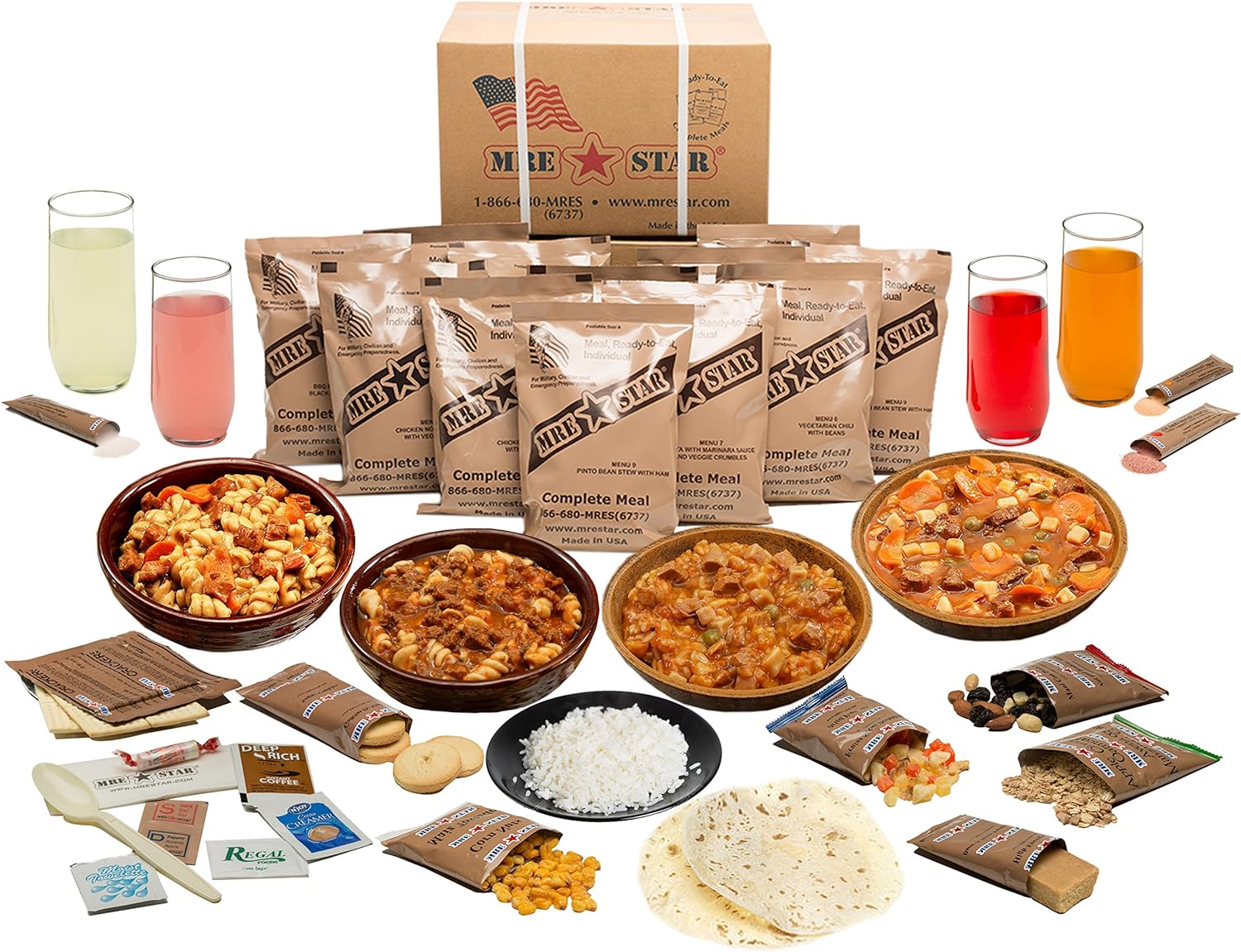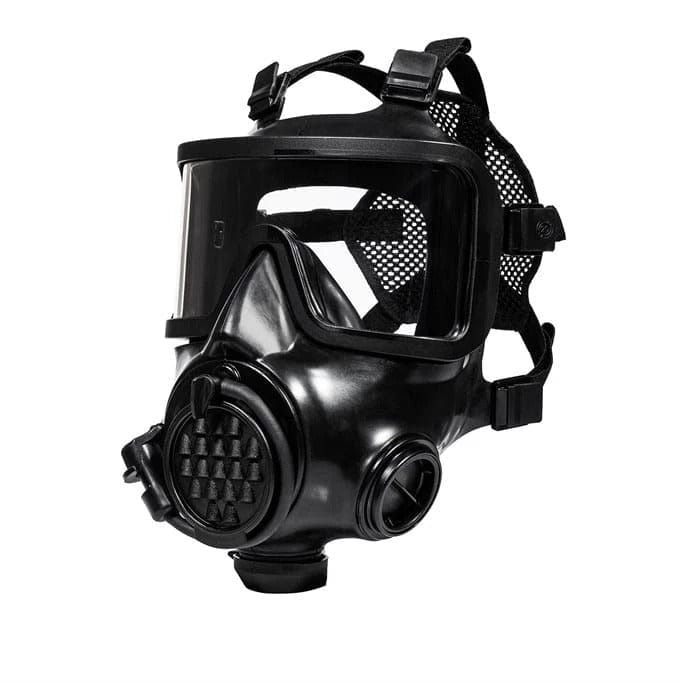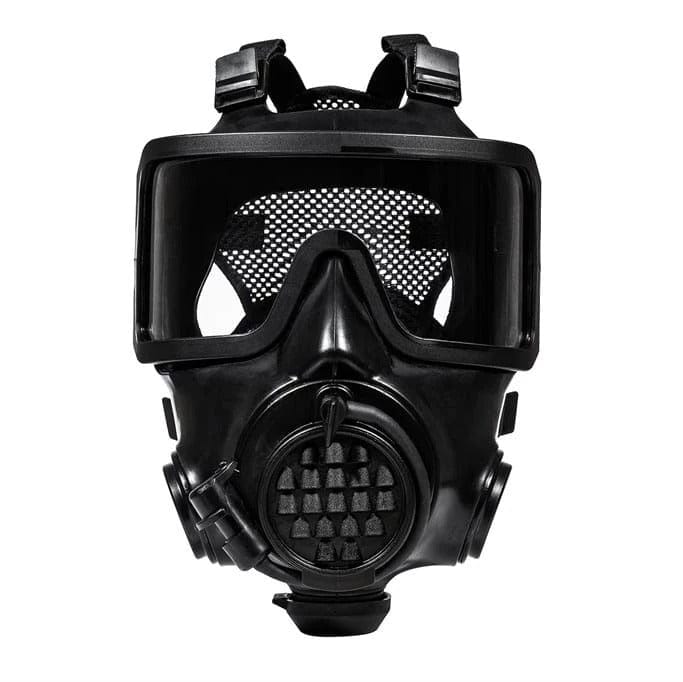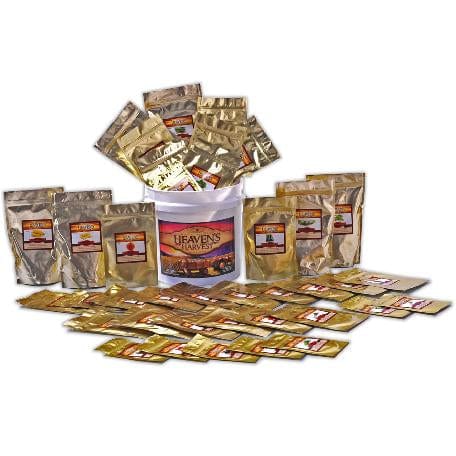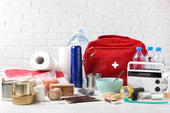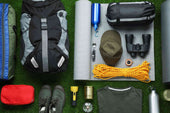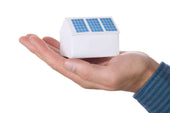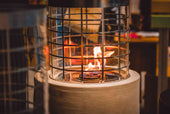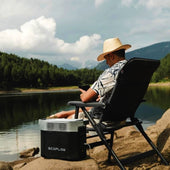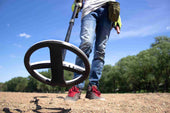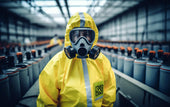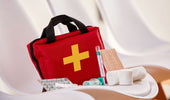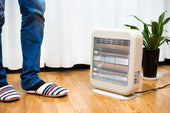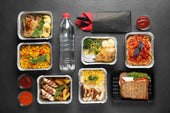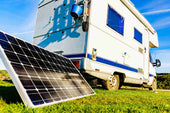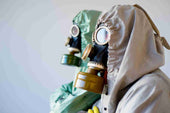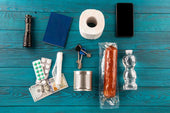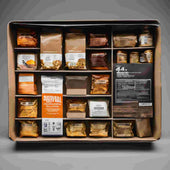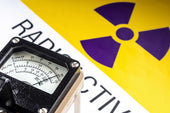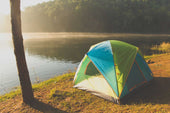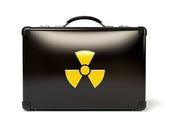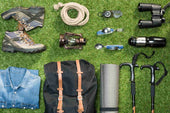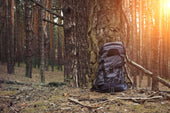Nuclear fallout is a leftover radioactive material that moves into the atmosphere after a nuclear explosion. It falls out of the sky after the nuclear explosion, and the shock wave passes.
The Cold War ended long ago, but there is still a threat of nuclear attack because more than 14,000 nuclear weapons from the various nations plan to bring down the United States of America.
Fallout is also referred to as radioactive ash and dust, created when there's an explosion of nuclear weapons.
Nuclear fallout may accompany a pyrocumulus cloud and fall on the ground as other substances darken black rain. This radioactive ash and dust usually contain fission products, which are highly dangerous when exposed. Exposure to them mixes them with neutron-activated atoms.
In this article, we will learn more about nuclear fallout and how to survive it shortly.
Different types of fallout
There are different types of nuclear fallout, including local and global. An airburst or a nuclear detonation in the air could cause worldwide or global fallout, while a ground burst can cause local fallout.
During a worldwide or global fallout, fission products and nuclear residues will condense into a refined suspension of tiny particles.
Then, these particles will be stuck in the stratosphere. The fallout would be dispersed worldwide through atmospheric winds and settle on the surface after days, weeks, months, and years as global or worldwide fallout.
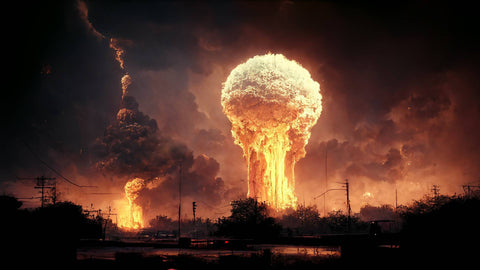
The global fallout can pose radiobiological hazards to humans due to the potential accumulation of living radioisotopes, like Caesium-137 and Strontium-90, by consuming foods that contain radioactive materials.
On the other hand, during a local fallout, the heat can vaporize a huge amount of water from the water surface, bursting and drawing up to form a radioactive cloud near the explosion site.
Local fallouts are intense but short-lived. As the material condenses with fission products, it becomes a radioactive contaminant, becoming neutron-activated.
Some radioactive products affect vast areas of land and water, mutating human and animal life.
When a surface bursts, it can produce a lot of particulate matter. The larger particles will pour out of the stem, and nuclear fallout will arrive near ground zero, possibly within an hour. The less volatile elements deposit first.
Factors that Affect the Nuclear Fallout
The height and surface composition determine the location of an explosion. If a nuclear weapon is detonated in the air (air bust), it will produce less fallout than those detonated near the ground. Meanwhile, when the nuclear weapon is detonated on water (water surface burst), it will produce less local fallout and extend to a greater area.
The fallout from seawater is difficult to remove. On March 1, 1954, scientists conducted a hydrogen bomb test at Bikini Atoll.
On the other hand, meteorological conditions can also affect fallout. Atmospheric winds can bring fallout to far and large areas. For example, the Castle Bravo surface burst at Bikini Atoll on March 1, 1954, affecting the Pacific Ocean and its islands, extending over 500 km downwind and 100 km varying in width.
Furthermore, snow and rain can accelerate the local fallout. Nuclear blasts in limited areas of heavy contamination may be formed in special meteorological conditions.
Effects of Nuclear Explosions

After a nuclear explosion, a wide range of biological changes could occur in animals, humans, and the environment.
First, a nuclear blast can directly injure humans by affecting the lungs' eardrums and throwing people at high speed. In addition, during a nuclear blast, casualties can occur due to flying debris.
Second, it can cause thermal radiation, start a fire, and prevent people's escape. Thermal radiation can also burn a person's skin and cause death.
Lastly, it can also cause initial radiation due to the gamma radiation and neutrons released. Nuclear explosions can lead to nuclear fallout over minutes to hours.
Effects of a Nuclear Fallout
The radiation dosage after a fallout can be delivered over an extended period. Most of the dose from nuclear fallout is external exposure to gamma radiation from radionuclides on the ground.
Radiation has latent and acute effects on the body. The acute effects can cause sickness and death due to the high radiation dosage.
Meanwhile, the latent effect is cancer. Another long-term effect is the induction of eye cataracts. This effect is prevalent in Japanese survivors during the atomic bombing and workers during the Chornobyl disaster.
Finally, it has been confirmed that Japanese survivors during atomic bombings experience non-cancerous diseases such as hypertension, thyroid diseases, myocardial infarction, cataracts, chronic liver disease, cirrhosis, and myoma.
How to Survive from Nuclear Fallout
Thus, we have seen above that nuclear explosions and fallout can lead to diseases and death. Below are some of the steps for survival during fallout:
First One Hour
Anyone who is near the detonation of the bomb will be killed instantly. But if you are far from the 'mushroom,' there are ways to survive.
If you are outside your home during a fallout, finding a shelter within 15 minutes is recommended. Go to the nearest building you can see.
If your home or the building you're staying in has an underground fallout shelter, proceed to this location.
You should only stay in your cars, trucks, or other automobiles if you can drive away from the fallout area before your 15-minute time allowance expires.

Next, close the windows and doors of your shelter and turn off the air ventilation so the contaminated air outside during fallout won't get inside your temporary home or building.
In seeking shelter, it is recommended that the walls and ceilings should be heavy and dense to protect you from falling debris and radiation from fallout.
Next, it must be noted that the further you go underground, the better. If you can't go underground, stay in the middle of the house or the building. Be sure to stay for longer hours inside the building and avoid getting outside.
Remove your clothes and bathe if you were outside when the fallout occurred. Wash your hair with shampoo without conditioner and clean your body with soap, including your ears, nose, eyelashes, and eyelids.
The goal is to remove the radioactive material in your body as much as possible.
Remove your clothes and put them inside a plastic bag. Seal the bag and keep it away from people. Then, put on clean clothes so you can survive the weather.
Teach the same steps to your family and friends within the fallout.
First 24 hours
After surviving the first hour of fallout, stay inside the building and gather all survival materials.
First, find water and food. Water bottles and canned goods are the best solutions during these times. Check the pantry to see if you have stocked MREs (Meals Ready to Eat), canned goods, pastries, etc.
You should ration the food. You can make your own drinking water if you can't find water bottles. You can filter water from a well, covered reservoir, or tank. However, drinking water should not be contaminated by fallout.
Remember, even if you boil it, it is not safe for drinking.
Next, gather all the essential emergency supplies, such as a battery-operated radio, flashlight, candles, matches, first aid kit, sleeping bags, gloves, face masks, extra clothes, knives, and more.
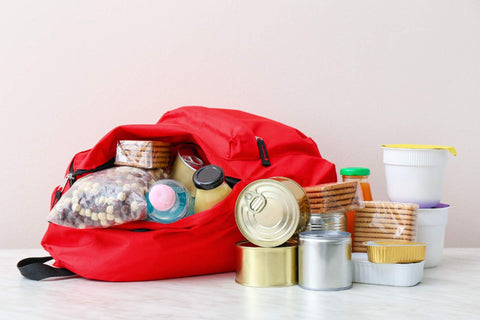
Check for a temporary power source, such as fuel or fuel generators, extra batteries, and power banks. Prepare your gadgets, such as smartphones, and charge them.
Of course, phones are very helpful nowadays. If your phones are working, you can call for help from authorities. You can check on your loved ones if you have a good battery and signal.
On the other hand, there could be power outages after a fallout. Thus, a battery-operated radio will keep you updated on when to leave the building.
Meanwhile, a face mask can temporarily prevent you from inhaling contaminated air inside the shelter you are staying in.
If you are feeling dizzy, nauseous, and tired because of the fallout, make sure to drink potassium iodine and get some rest. If you are vomiting in the next hours and experience seizures, you must go to the nearest hospital for immediate medical attention.
First One Week
For the first week, leave your shelter according to the authorities' advice. Although 80% of the fallout's energy subsides in the first 24 hours, it is still advisable not to leave shelters.
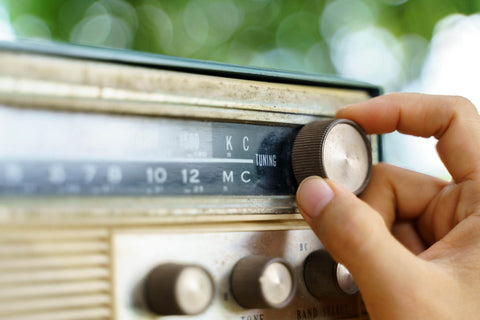
Continue to listen to your radio for updates. If your food and water are depleting, you should explore other resources. Ration your food, and remember not to eat food from the backyard garden exposed to fallout.
Waste disposal could be an issue in the long run. Make sure to use plastic bags for your food waste. Also, put your used gloves, masks, wipes, and clothes exposed to fallout inside a plastic bag and label it properly.
Be vigilant—mind over matter. Don't panic, and be smart. Listen for updates and plan your survival.
Why It's Important to Keep Potassium Iodide On Hand
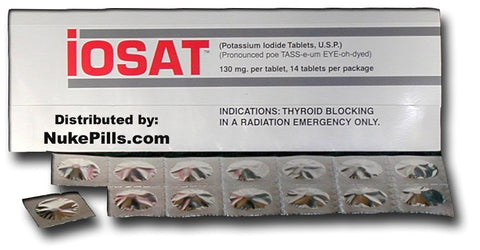
Potassium iodide has come to be associated with surviving nuclear war.
The Food and Drug Administration approved potassium iodide tablets in 1982 to protect the thyroid gland from thyroid cancer-causing radioactive iodine emitted by nuclear weapons. The tablets flush the radioactive material out of the gland, which floods it with stable iodine. Each complete kit has these.
Despite helping the thyroid, potassium iodide does not shield the rest of the body from radiation. The World Health Organization emphasizes combining it with other precautionary measures to lessen the adverse effects of radioactive exposure.
The standard table salt won't work. Skip the grocery shop and get what you need instead.
- Eat potassium iodide ideally two to three hours before radiation exposure
- If not, take them as soon as possible after a nuclear explosion.
- Take these every day at the same time until you leave the radioactive area.
Preparing a Nuclear Survival Kit
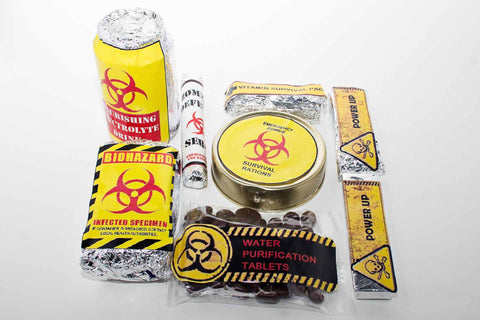
You can survive a nuclear explosion with a well-stocked nuclear survival kit.
You have a ton of options when creating a go-bag or a kit for sheltering in place. So it's possible to shop while overthinking. Follow this set of requirements, and it's done! You have a survival kit in case of a nuclear attack. The good news is that, other than those already mentioned, the list resembles any other disaster emergency kit.
Remember to customize your kit or the kit for your household based on your specific demands. Does anyone in the household have allergies or require prescription medication? What would your pets need to survive for X amount of days, if you have any? How about entertainment, such as a deck of cards (hopefully more)?
The Centers for Disease Control and Prevention (CDC) advises that each person have a three-day supply of supplies and food. The main goal is to replace any items in your emergency supply that have reached their expiration date every six months.
Keep an emergency survival kit, or many kits, at your home, car, and places where you spend the most time.
Here is the list of things, ideally, that you can start preparing now so you'll survive a fallout:
- Food and Water—Water bottles, MREs, Canned Goods, and other food items are suitable for 30 days. Each person should have one gallon of water for at least a week.
- Batteries
- Radiation dosimeter
- Hand-crank radio
- Multipurpose shovel/pickax
- Flint fire starter
- Hurricane matches
- Compass
- Wire saw
- Potassium iodide tablets
- Flashlight
- Pocket knife
- Backpack
- First aid kit
- Whistle
- Eye protection
- Surgical masks
- Wrench or pliers
- Local map
- Manual can opener
- Plastic sheeting and duct tape
- Garbage bags
- Moist towelettes
- Flares
- Electrolyte drink mix
- Sleeping bags/thermal blankets
- Medical supplies
- Fire extinguisher
- Whistle
- Candles
- Rope
- Cell phone, charger, backup battery
- Rubber gloves
- Personal items — baby gear, prescription medication, family documents, etc.
You can store food in the pantry or cool, dry, and dark places. You can also put it in a waterproof container and ensure it is appropriately sealed.
Meanwhile, you can put the non-food items in a box or big plastic containers. Put it in places where it can be accessed quickly during emergencies. Replenish the items regularly and ensure they are within their used-by dates.
Although there's a good chance you won't need any of these supplies, it's always better to be proactive and ready just in case.
Conclusion

The United States now faces a much different and shadowy nuclear threat from terrorist groups and other countries.
If a nuclear blast occurs in your town or city and you have somehow avoided its flash of light, shock waves, and fireball, it is recommended that you seek shelter immediately.
Familiarize yourselves with the tips mentioned above because you might use them soon.
In addition, prepare a few items handy in your nuclear survival kit. Indeed, it is smart to have a family plan and emergency kits that can last several days during a nuclear fallout.
We can't prevent nuclear attacks, but we can take measures to ensure our safety and our families' survival.

